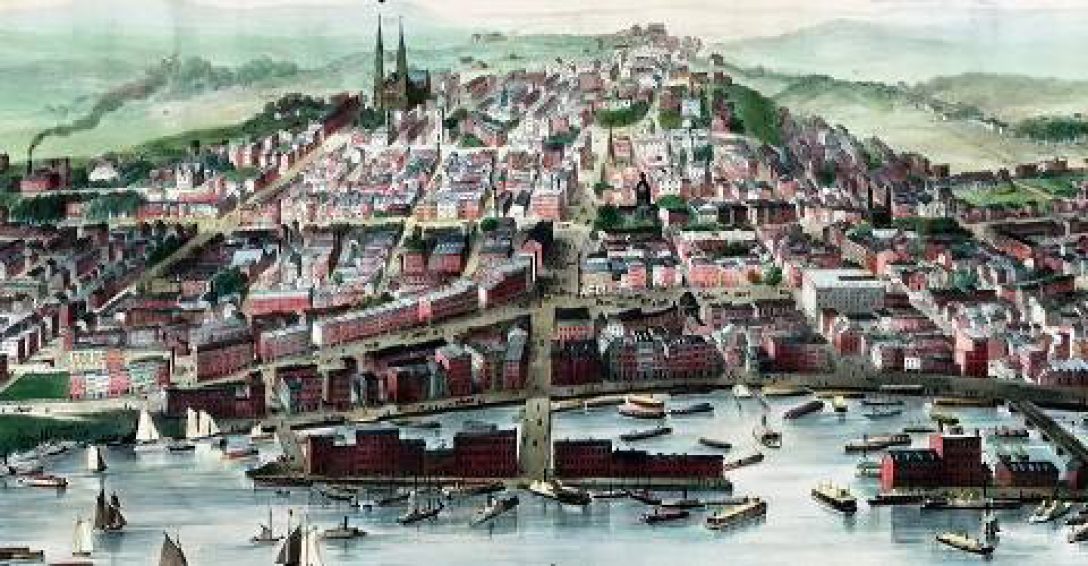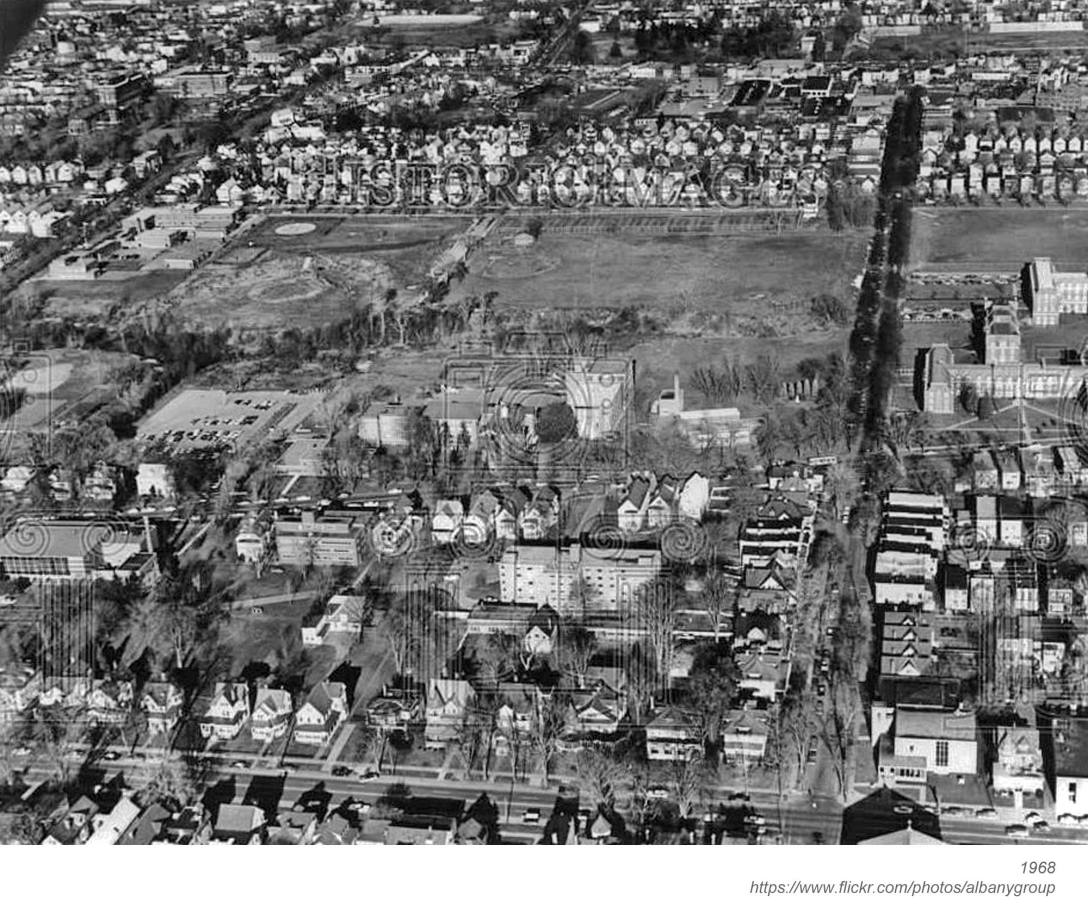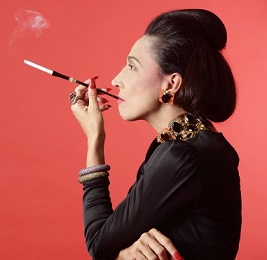Cities change; sometimes the change is slow and sometimes rapid.. but they change. They reflect the people who live in them and their changing needs. We think that no other place in Albany demonstrates this type of change as well as one block on Washington Ave. between Partridge St. and North Main Ave.
.The Cemetery
In the early 1800s this area was probably farmland, several miles away from the populated area of the city. But in the late mid-1840s it became a Roman Catholic Cemetery. At that time it was bounded by Washington Ave., Erie St., Lancaster St., and North Main Ave.
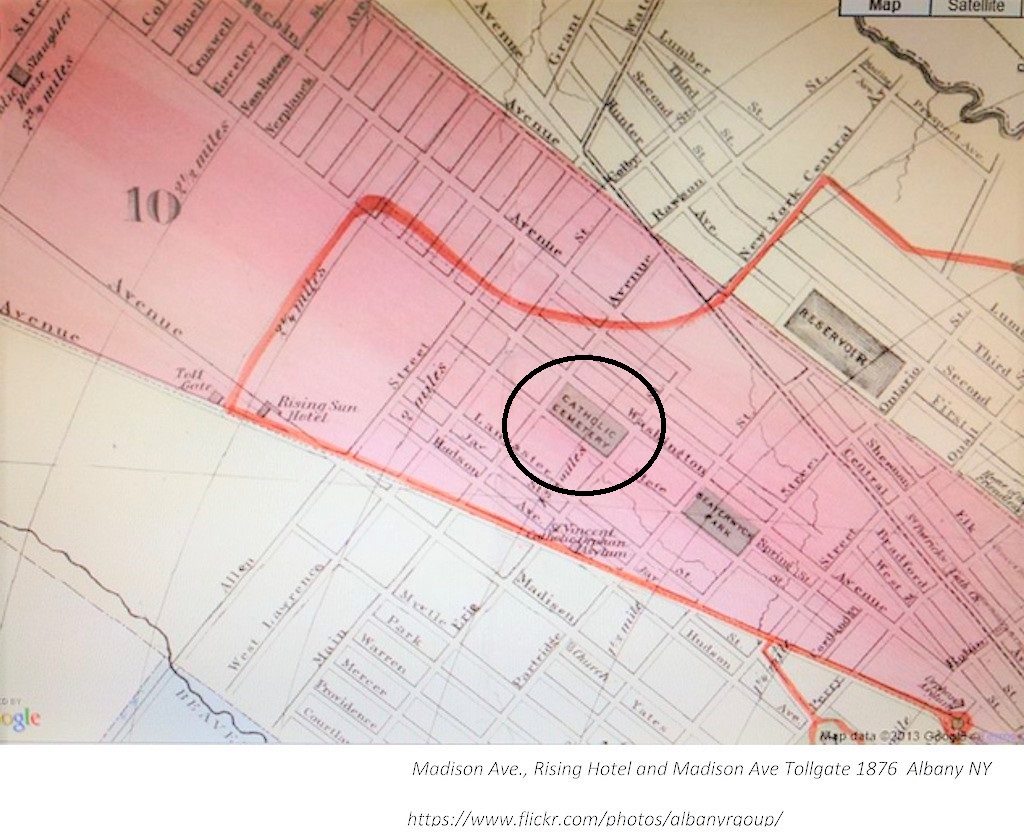
The original purchaser was probably St. Mary’s Parish because it’s usually known as Sr. Mary’s Cemetery today, but by the late 1860s and 1870s it was known also known as Cathedral Cemetery and St. Joseph’s Cemetery as well. Although there was a small Roman Catholic lot in the State Street Burial Ground (it would later become Washington Park) dating back to about 1800, as a huge influx of mostly Irish Catholic immigrants poured into Albany it became inadequate. St. Mary’s become the primary Catholic cemetery in the city. In the 1860s, about 20 years after Albany Rural Cemetery (ARC) was founded, the Catholic Diocese created St. Agnes Cemetery in Menands, but burials in St. Mary’s Cemetery continued. But the city was expanding at an explosive pace. The population grew rapidly after the Civil War, and the invention of first the electric trolley, and then the automobile made it possible for residential development to expand west from downtown.
By 1910 or so land was at a premium and city officials were working to remove the few private cemeteries in city. A newspaper notice from 1914 says the disinterment of at least 8,000 bodies will be begin in the next week; but that appears to have been delayed. A 1916 article says disinterment is imminent and refers to 2,000 bodies. We may never know number of removals.
The Park
The City of Albany purchased the cemetery land (about 8 acres) around 1920 , and then subsequently property on Lancaster St. (that at the time ran between Partridge St. and North Main Ave, parallel to Washington Ave).
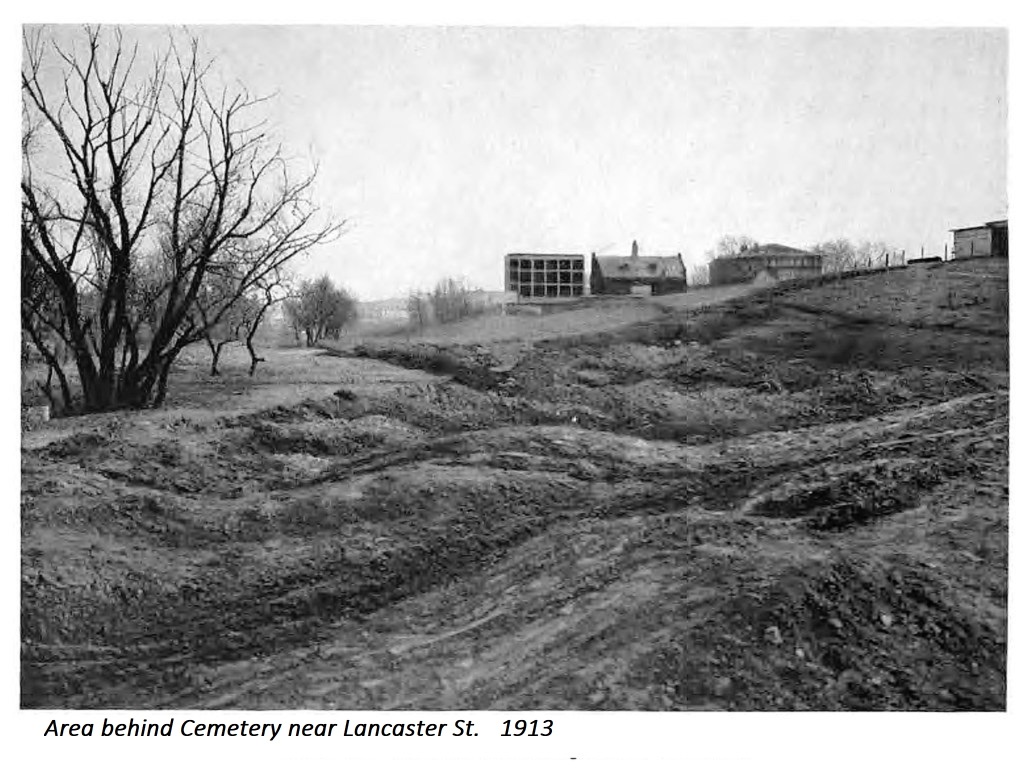
There were lots of idea about what it should be, including a miniature golf course (all the rage at the time). But it was decided it should be a park – St. Mary’s Park and playground; it opened around 1925. In the mid-1930s the park was expanded, and the Erie St. boundary disappeared – extending area to Partridge St. And it so remained a park for about 2 decades.

In 1945 part of the property was transferred to New York State. Prior to World War II the State Teacher’s College had plans to expand its facilities, and construct a gymnasium and other buildings. But those plans were de-railed by the War, and would be de-railed again after the War.
The Barracks Village
Before World War II there was a severe housing shortage in Albany. Post-War the shortage became a full-fledged crisis. Men came back from the War had shared bedrooms as boys; they now had wives and children and nowhere to go. Several generations of families were crammed into small houses and apartments. It was that way across the country. Yet building takes time, so New York State decided it needed to construct temporary housing for veterans across the state.
In Albany it selected the St. Mary’s Park land owned by both the State and city. Old military barracks were trucked in from the western part of the state and converted to housing. A street grid was laid out:, water, sewer, gas and electric lines were run, and concrete sidewalks poured. There was even a village post office and a small playground The village was designed to accommodate 250 families in apartments and 150 single men who would be living in dormitories -attending school on the GI Bill. Newspaper articles of the time report there were 700 applicants.
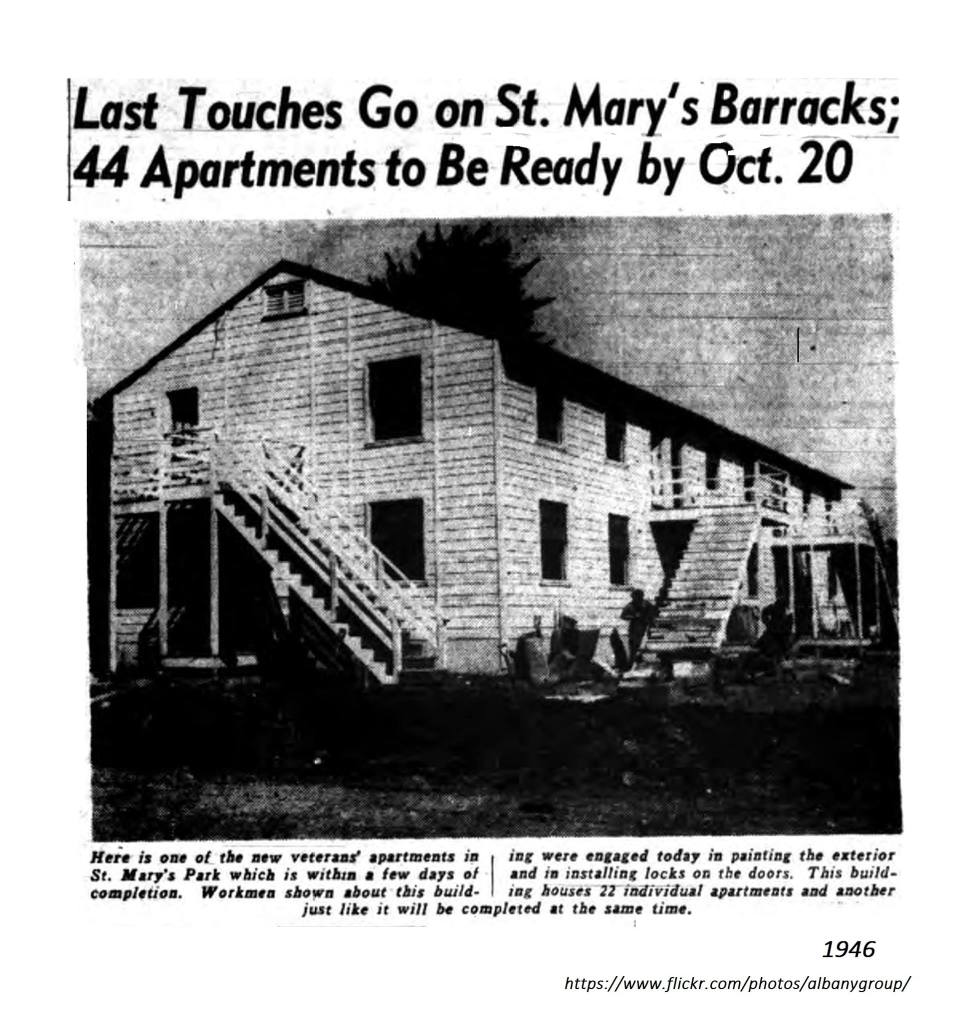
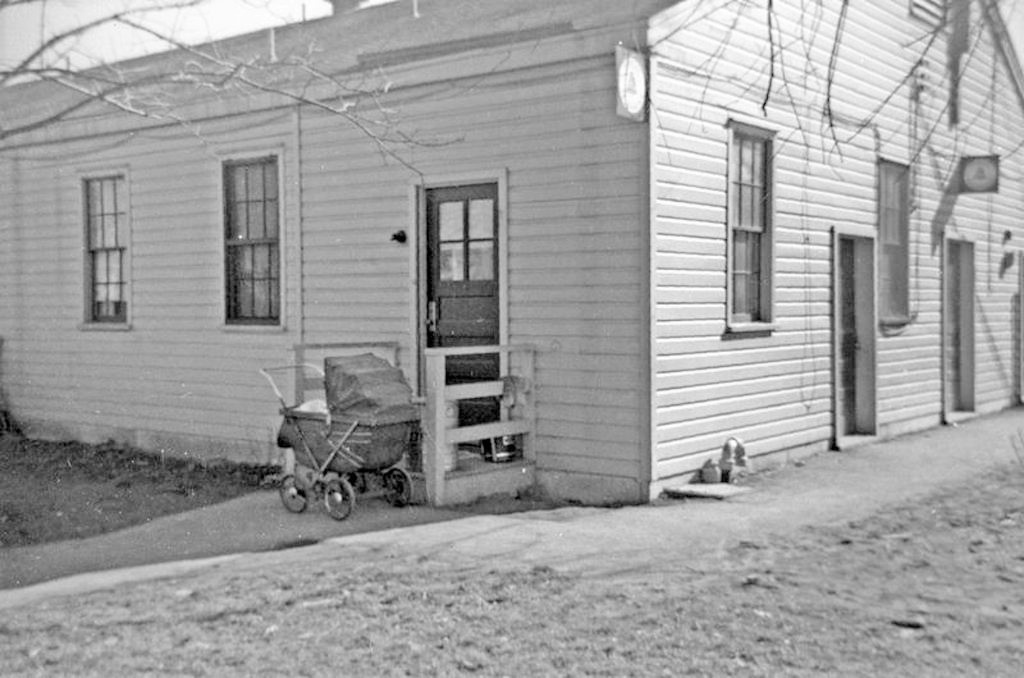
The first 22 families moved into their new homes in October, 1946.And everything was wonderful until it wasn’t.
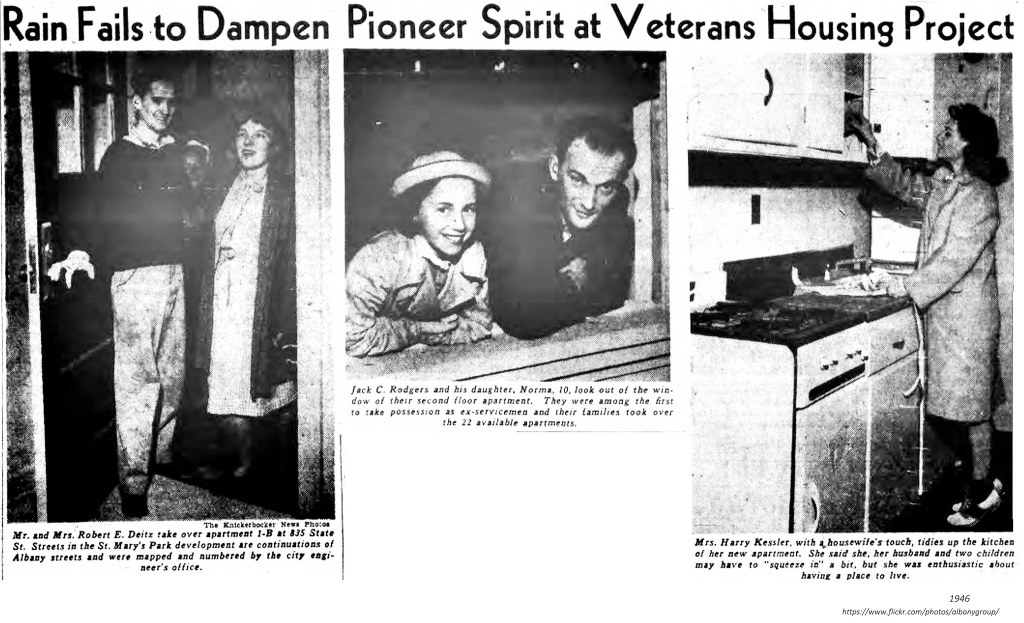
The little veteran’s village was meant to be temporary, but NYS authorizing legislation was extended twice. By 1952 it was still occupied, although the buildings were deteriorating and several had to be evacuated. NYS offered it to the City – the city declined because it was building Albany’s first housing project in North Albany. Things got messy; the remaining families were evicted, and in 1954 all traces of the village was razed.
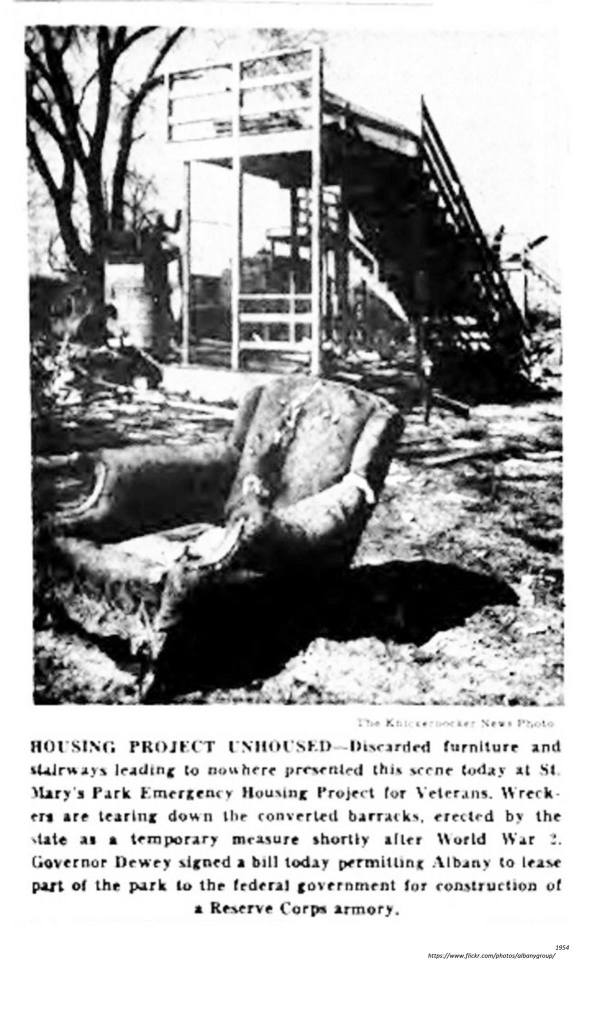
St. Mary’s Park and Playground Again
By 1956 St. Mary’s Park was turned into a playground again. This time it was much expanded, with a large wading pool (it was concrete and knee scrapes were legendary), the addition of tennis courts and a baseball diamond. Off to one corner on North Main Ave. the Naval Reserve Center was built about the same year.
The High School
In 1966 Albany decided to build a new high school in St. Mary’s Park. The area to be used was identified as 27 acres. The existing high schools, Albany High on Western Ave. and Philip Schuyler in the South End, were old, deteriorating, out-of-date and over-crowded. Additionally, they were concerns raised by the NAACP about the lack of facilities and programs (compared to Albany High) in Schuyler High School which had a majority Black student body.
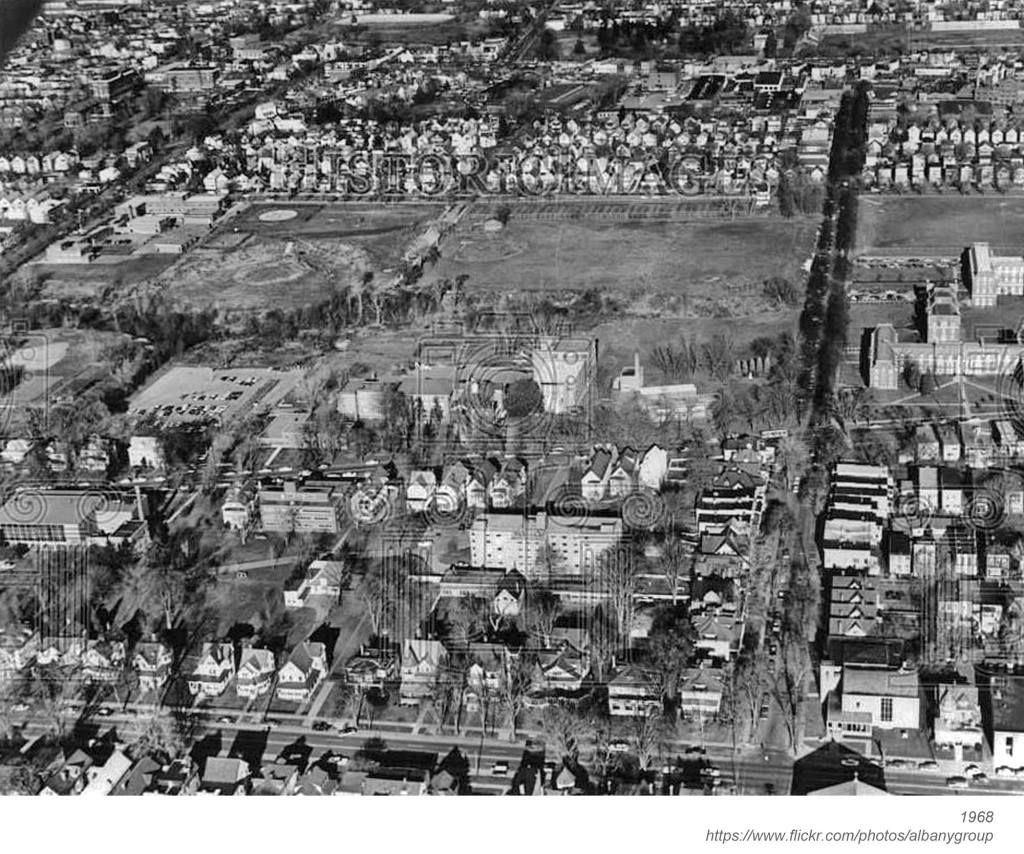
But this is Albany and things sometimes move like molasses in January. Finally the first pilings for the new high school for sunk, but they had rusted out by 1970 (O Albany).

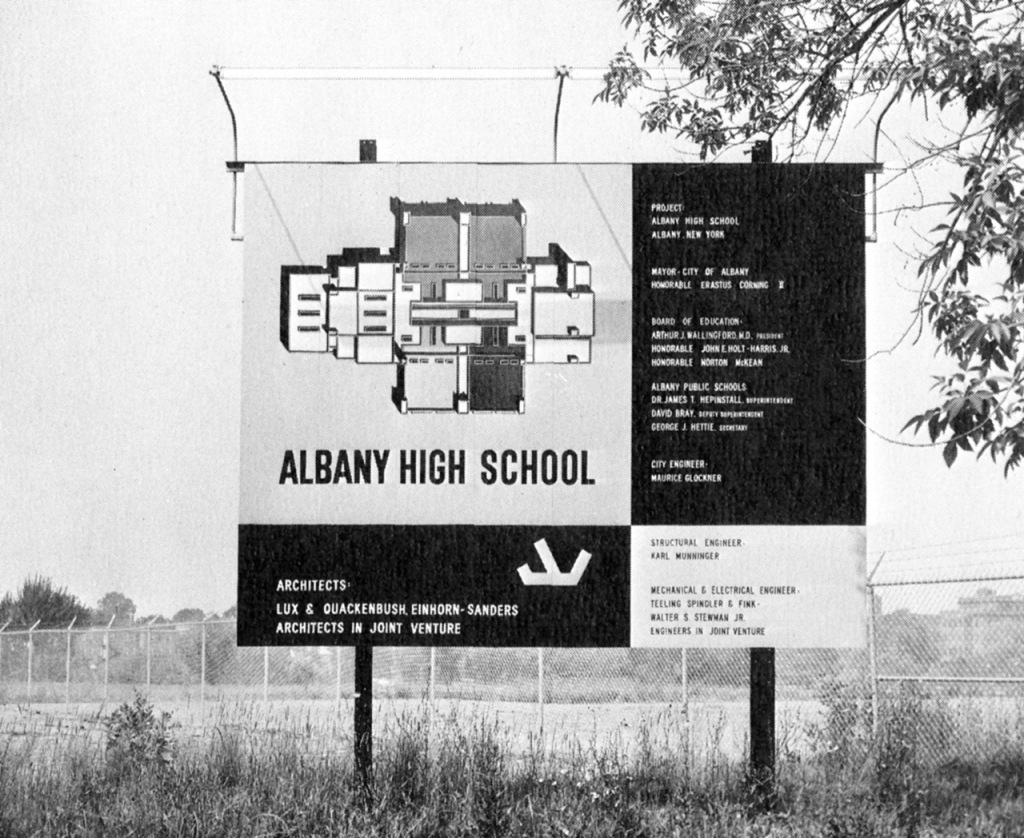
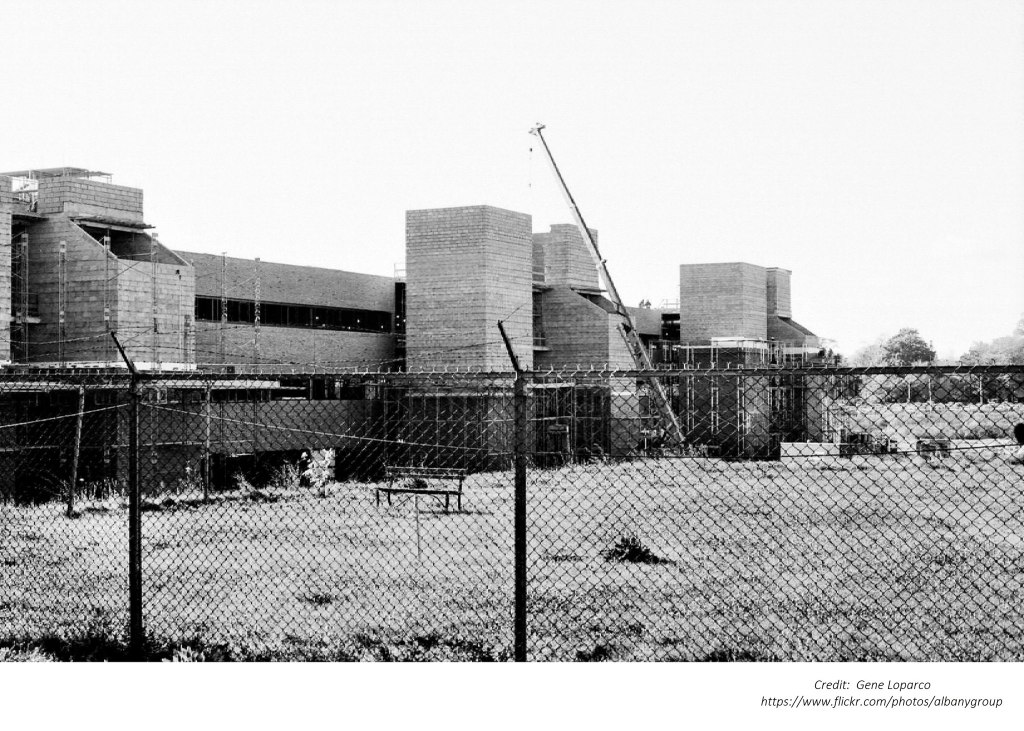
After a new start, a multi-million dollar cost over-run, and charges of corruption and graft among contractors and politicians the new Albany High School opened in January, 1974, amid rumors it was haunted.
The Haunted High School ?
Well, Albany High IS built on an old cemetery. And almost every time something new was built on the site remains from the old cemetery were found. During the first transformation to a playground newspapers reported that remains of 2 individuals were found; at least one body was found when the Barracks Village was built; another when the site returned to a playground in the 1950s, and in 1972 during high school construction workers found the remains of two individuals from the cemetery. Who knows what lies beneath?
Copyright 2021 Julie O’Connor
